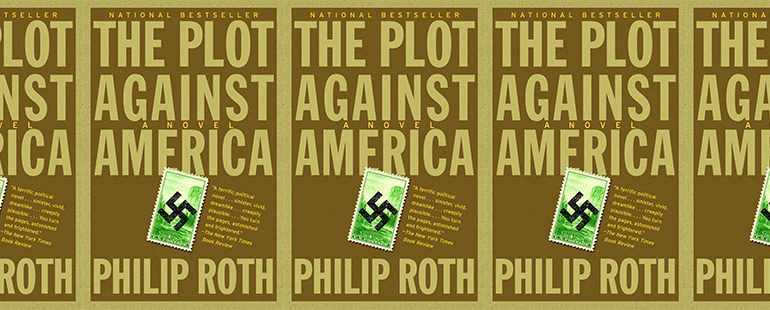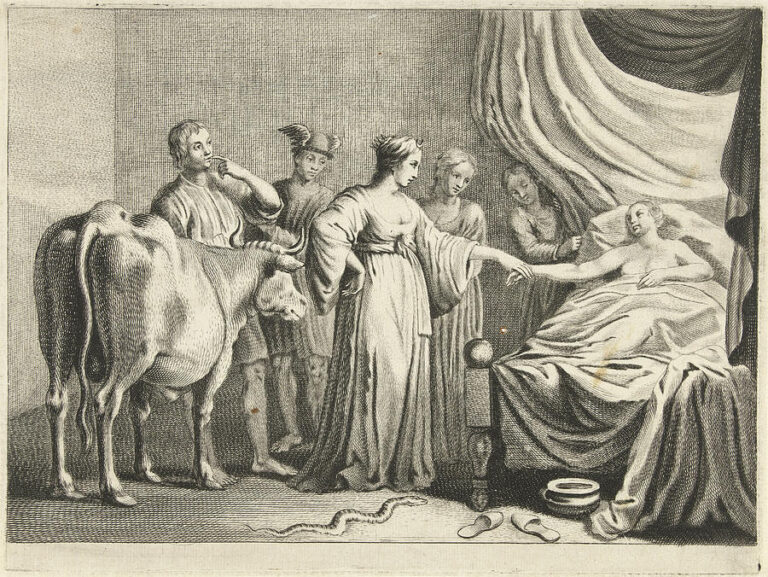Jewtopia

Like many, I’ve found it difficult to detach from Twitter during the pandemic. What began as a diversion—waiting for a glimmer of hope to materialize on my feed—turned into a practice of self-flagellation. The news has only gotten progressively worse, yet I’ve remained glued to my screen. Sometimes I’m taken beyond pedestrian pandemonium and into a place of existential dread. I’m talking about the moments when I open the app and Twitter tells me that “Jews” are trending. Invariably it’s happening because somebody has said something anti-Semitic. The discourse in response can often be healthy, but it can also be a theater of dog whistles from all sides. Part of me always wants to read to see what everybody has to say on the matter, but the other part of me just wants the moment to pass.
Transgenerational trauma is real. A study cited in a 2003 article in the American Journal of Psychotherapy concluded that grandchildren of Holocaust survivors “were overrepresented by 300% among the referrals to a child psychiatry clinic, in comparison with their representation in the general population.” My grandmother survived Auschwitz. She brought her animal-trader husband and two sons, my newborn father and his infantile brother, to Israel first, where they lived in Soviet-style refugee housing. Seeing no future there, she made the decision to move to the U.S. They had little English and no concrete job prospects, but the immigrant community in Cleveland was tight-knit, supporting them as they built up their business: Katz’s Kosher Meat Market. Finally settled, she intended for her family to all stay close to each other. As she got older, anytime someone was thinking of leaving town, she’d implore us to stay, reciting the refrain that has now become a family catchphrase: “Don’t go no place,” she’d say.
Her phrase has taken on new meaning for me over the past few months, not only because it’s the Yiddishkeit version of #stayathome, but also because of its hidden meaning. Grandma wouldn’t have known it—she spoke Yiddish, Hebrew, and English—but the phrase “no place” is actually the literal translation of the word “utopia” from its original Greek. Ascribing that reading unto her saying makes it seem as if she was trying to tell us that we wouldn’t find what we were looking for outside of our home. To some extent, the pandemic has crystallized that notion. I social distance for my health and so that I can have Shabbat dinner at my aunt’s house on Friday nights. Family is the place. Nobody understands this interpretation of the utopian ideal better than immigrant communities.
One of my early pandemic companions to anxiety-inducing Twitter flareups was David Simon’s recent adaptation of Philip Roth’s novel The Plot Against America. Roth’s book captured the essence of the early twentieth-century Jewish immigrant experience. It’s a speculative work depicting an alternate history in which Charles Lindbergh, an American hero known for his aviation exploits who was also an anti-Semite, becomes president of the United States. The main characters are the members of the Roth family of Newark, New Jersey. They are the progeny of a wave of Jewish immigrants that landed on the shores of the U.S. towards the end of the nineteenth century, escaping pogroms in the Pale of Settlement in search of a better life. They settled together in urban tenements.
There are dozens of essays about the parallels between The Plot Against America and contemporary U.S. politics. Lindbergh’s “America First” slogan, widespread disdain for immigrants, and politics dividing families at the dinner table are some of the subjects covered. All of the pieces are valid and important to read, but rather than draw the past into the present, I found myself compelled to draw the past into the even deeper past.
In Plot, the Lindbergh administration creates an agency as an answer to the “Jewish question.” Some might recognize that phrase as the title of an anti-Semitic scourge written by Henry Ford in his newspaper, the Dearborn Independent around the time of the book’s events. Ford is an active member of Lindbergh’s cabinet in Plot. What they create is called the Office of American Absorption—the “OAA” for short. It’s exactly the sort of innocuous, bureaucratic moniker behind which insidious behavior hides.
The OAA signs into action the Homestead 42 Act. It’s an updated version of the Homestead Act of 1868, in which the US government offered up plots of land in the heartland to willing settlers, except the difference in Plot is that the Homestead 42 Act is less of an option than its predecessor and more of a forced suggestion—one specifically targeted at Jews. A letter from the OAA comes to Herman Roth, the father of the book’s adolescent narrator. His employer, MetLife, is being forced to send him and his family to Kentucky under the program. “Homestead 42 will provide a challenging environment steeped in our country’s oldest traditions where parents and children can enrich their Americanness over the generations,” the letter reads—the implication being that the Jews are not American enough for the government’s, or its other citizens’s, taste.
It may seem like a stretch to read tension in the language of the letter, but Philip, Herman’s younger son and the narrator of Plot, provides the necessary context. “My father objected strenuously to what the OAA’s existence implied about our status as citizens,” he says. Herman views the OAA as an attack. Philip’s observations of his family’s politics arise out of arguments he observes at—where else?—the dinner table. His brother, Sandy, expresses a desire to see the American heartland, likely as an act of rebellion against his father whose vociferous opinions and aggressive tone can be alarming and off-putting. “Under the auspices of Just Folks—described by Lindbergh’s newly created Office of American Absorption, as a ‘volunteer work program introducing city youth to the traditional ways of heartland life’—my brother left on the last day of June 1941 for a summer ‘apprenticeship’ with a Kentucky tobacco farmer,” Philip says. The OAA serves not only to remove Jews from urban areas but also to sow discord amongst them.
In 1901, the Industrial Removal Office was formed by Jewish charity organizations at the behest of Baron Maurice de Hirsch, a German-Jewish financier. The IRO sounded much more menacing than its fictional counterpart in Plot, but it was formed with seemingly better intentions. The idea was to relocate Russian Jewish immigrants from ghetto-like conditions in urban areas on the east coast to America’s heartland, where they’d achieve the utopian agrarian ideal instead. Nearly every one of the settlements failed, proving the definition of utopia true.
The Jewish back-to-the-land movement at the turn of the twentieth century was a nice dream, but it was underpinned by anti-Semitism and the exploitation of immigrants’s insecurity. In an article from the 1990 edition of Great Plains Quarterly, author Janet Schulte writes, “One of the reasons behind the formation of Am Olam, a Jewish ‘back-to-the-land movement,’ was to prove to non-Jews that Jews were capable of productive physical labor, not merely commercial or financial dealings.” Jews were shamed into accepting a monolithic view of themselves; some felt the need to overcompensate. Shame, fear, and ambition are all crucial elements of the Jewish immigrant experience—of any immigrant experience—and can be wound up into a ball of anxiety.
American anti-immigrant sentiment was high at the turn of the century, and though some politicians in Southern states were disgusted by them, they saw an opportunity to take advantage of the Russian Jews’s presence. In South Carolina, for example, leaders thought both that the immigrants would develop lands that once proved untillable, and that their presence would lead to a much more sinister outcome: in Happyville, a Jewish settlement near Aiken, South Carolina, Arnold Shankman wrote, “Competition from foreigners would force Negroes to abandon improvidence and ‘cheerfully meet the demands upon them in the fields and workshops of labor.’”
The environment for all Jews was not a good one, even those who’d already been in the country for seventy-five years. Between 1815 and the Civil War, many Jews migrated from Germany to the United States. Most of them were escaping the ruined landscape left behind by the Napoleonic Wars. There had also been restrictions against Jews in Germany from practicing mainstream trades or professions unless they had a matrikel, a very expensive certificate from the government. Their prospects in the country were bleak. As such, they felt they had already fought tooth and nail to be absorbed into the mainstream when the Russian wave of Jewish immigrants began arriving on American shores. Many of them didn’t want to be grouped in with the newcomers and have to start over again. Hence, the formation of the IRO and resulting heartland settlements. One of these, in Kansas, was called Beersheba. In a 1970 article about the settlement, published in American Jewish Historical Quarterly, author Lipman Goldman Feld writes, “The established German American Jewish community viewed these refugees from Czarist pogroms with ambivalent feelings. While sympathetic to their suffering, they were concerned with the effect the newcomers, with their strange dress and language, would have on the Jewish image in the United States.”
The German Jewish sentiments at the turn of the twentieth century are captured by Roth in Plot via the character Rabbi Lionel Bengelsdorf. Played excellently by John Turturro in the Simon adaptation, Bengelsdorf is an archetypal turncoat. His thirst for power and recognition is embodied in his overwrought manner of speaking, and captured by Philip: “He’d been born in South Carolina in 1879, the son of an immigrant dry goods merchant,” Philip says, “and whenever he addressed a Jewish audience, whether from the pulpit or over the air, his courtly southern accent, along with his sonorous cadences—and the cadences of his own multi-syllabic name—left an impression of dignified profundity.” Bengelsdorf’s desire for recognition makes him the perfect puppet for the Lindbergh administration. They could parade the Rabbi and his southern cadence around dinner parties, like one in the book where he dines with Joachim von Ribbentrop, a Nazi minister. The administration uses him as a shield for its anti-Semitism.
In Plot, there is no redemption. It ends with pogroms coming to New Jersey, ironically the only place that Jews had moderate success with agricultural settlements. Herman realizes he should have taken his family to the safety of Canada sooner. There was a silver lining to the IRO’s settlement of Jews in the heartland, though. The farms failed, but many of the settlers left as owners of parcels of land. In this way, these two periods of history are connected through to the present. The conflicts between German and Russian Jewish immigrants and their oppressors at the turn of the twentieth century are the same ones as those between Herman Roth, Lionel Bengelsdorf, and the Lindbergh administration in The Plot Against America. And the situation remains the same today. The same tropes are used against us and the same divisions still exist between us—some of us, for example, couldn’t watch the adaptation of Roth’s book because it was too real. Some of us recall how our great-grandparents settled the heartland with fondness. Some of us will never watch a Seth Rogen movie again. Some of us think the president is the biggest anti-Semite there is. Some of us think he’s a Zionist hero. What also remains the same, though, is that when we sit down for Shabbat dinner, time slows down and there is “no place” to be but the present.


